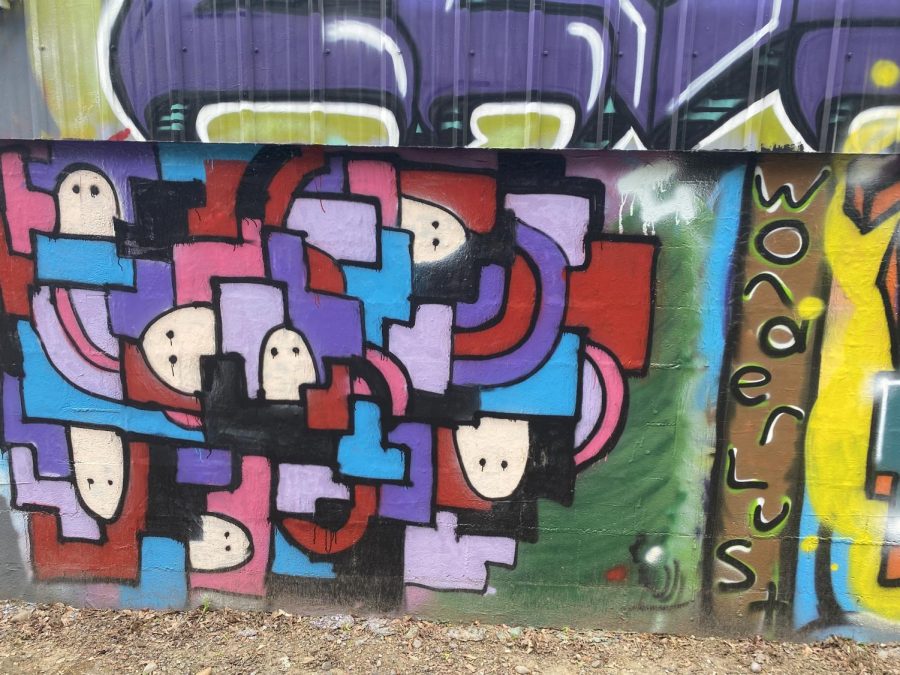Graffiti should be viewed as an acceptable form of art
Back alley behind Jerrol’s.
May 25, 2022
I love seeing graffiti. I drive through Portland on my way from home to CWU, and my favorite part of being stuck in traffic jams is seeing the cool graffiti art on the walls and bridges. Sure there is some less pretty graffiti, but there’s a lot of not pretty paintings and sculptures too. Seeing the depths and range graffiti can have prove that graffiti is art.
A lot of graffiti is really pretty. Downtown Portland has a ton of gorgeous murals. One of my favorites is a graffiti mural of the Chinese zodiac calendar on the wall of a Chinese restaurant. Of course, not all graffiti is as pretty, but I’ve never seen a piece of graffiti that I thought was unbearably ugly.
There have been some graffiti art pieces that have conveyed great messages. especially in a time of civil unrest. During the Black Lives Matter protests, a lot of politically motivated graffiti showed up in large cities, and a lot of it was beautiful.
Graffiti and street art can also serve a purpose. By most standard definitions, art requires some sort of meaning, and plenty of graffiti art does have meaning behind it.
A good example of this is all of the street art that happened during the Black Lives Matter protests. According to an article by the BBC, street art of George Floyd appeared all over the world. It wasn’t just in the U.S., which is where the events leading up to the protests happened, it was in Karachi, Kenya and Palestine as well.
This is also an example of graffiti being an art form that has been made inaccessible by society. Most visual arts are seen as “high society.” It’s hard for someone in poverty to get their hands on pastels and a canvas, but they can probably find some spray paint and a blank wall. Graffiti allows those with a voice to express themselves in a way that is otherwise gated by a price tag.
One of the most common arguments against graffiti is that people don’t want to see it. They don’t want to walk out their door and be bombarded by graffiti.
My argument against it is: suck it up. I hate constantly being bombarded with billboards and in-your-face advertisements and I still have to deal with those. These aren’t things we consented to seeing any time we’re outside in a large city, but if I have to deal with huge red signs with cheeseburgers on them, you can deal with concrete underpasses having artists’ tags on them.
The fact that graffiti is criminalized since it’s considered vandalism also makes me upset.
According to Seattle Criminal Defense Law Firm, in Washington, graffiti is considered criminal mischief and can be charged as such in the first, second or third demeanor. This can result in fines up to $1,000 or more and at least 90 days in jail. If the damage done to property is valued at more than $250 then it can become a felony offense.
According to Oregon Public Law, the law for graffiti in Portland is a fine and can additionally sentence up to 100 hours of community service, which includes the removal of the perpetrator’s graffiti or in its absence a similar work.
It just feels so weird to enforce laws about something so harmless, especially when it can be used as such a good form of expression.



